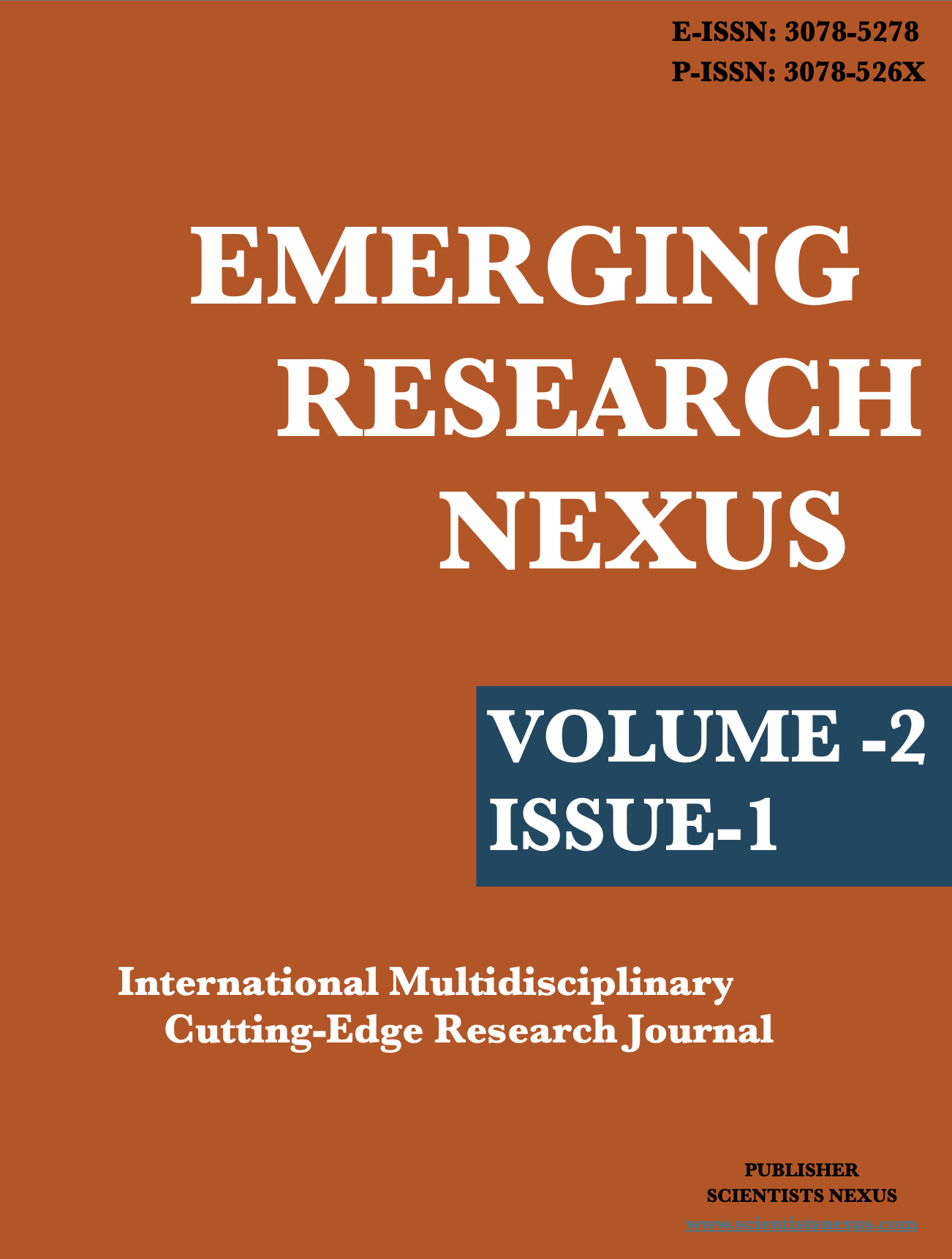Impact of Quality Analysis Assessment of Various Rice Traits Enhancing Cultivation and Nutritional Value
DOI:
https://doi.org/10.70788/ern.2.1.2025.14Abstract
Rice is a staple food widely consumed across the world, particularly in Asia. Its consumption patterns vary by region, with different varieties and types of rice preferred in different cultures. Despite rice's central role in global nutrition and its significant contribution to caloric intake, comprehensive studies on the quality characteristics of different rice varieties are limited. This study aims to fill this gap by evaluating the physical, chemical, and cooking properties of rice samples from two distinct varieties, GQTL 1401 Sample01 and Sample02, collected from the National Agricultural Research Center, Islamabad. The evaluation covers physical traits like length, breadth, and thickness, as well as chemical parameters such as moisture content, amylose content, crude fiber, crude fat, and ash content. In addition, cooking tests, including stickiness, aroma, and taste, are conducted to assess the cooking quality of the rice. The findings of this study will contribute valuable insights into the quality characteristics of rice, supporting efforts to improve rice cultivation and nutritional value.
References
• AOAC. (2006). Official Methods of Analysis. The association of official analytical chemists. Inc. 18th Edition Arlington, 2 :92-94.
• Abeysekera, W. K. S. M., Premakumara, G. A. S., Bentota, A. P., and Abeysiriwardena, D. S. (2017). Grain amylose content and its stability over seasons in a selected set of rice varieties grown in Sri Lanka. Journal Agriculture Science, 12, 43–50.
• Abeysekera, W. (2008). Cooking and eating quality traits of some Sri Lankan traditional rice varieties across Yala and Maha seasons. Troical Agriculture Research, 20: 168–176.
• Cruz, N. D., Khush, G. S. (2000). Rice grain quality evaluation procedures. In Aromatic Rices; Singh, R. K., Singh, U. S., Khush, G. S., Eds.; Oxford and IBH Publishing Co. Pvt. Ltd. New Delhi, India,15(1): 15–28.
• FAO. (2008). Statistical Databasis. FA0STAT; Agriculture Data.
• Food and Agriculture Organization/ International Research Institute. (2006). FAO Food and Nutrition Series, FAO Rome.
• Food and Agriculture Organization/ International Research Institute. (2002). FAO Food and Nutrition Series, FAO Rome.
• Hettiarachchi, H.A.P.W., Rebeira, S. P., Prasantha, B. D. R., and Wickramasinghe, H. A. M. (2016). Diversity of physical and cooking quality characters of selected traditional and improved rice varieties in Sri Lanka. Sri Lankan J. Biolgy, 1:15–26.
• Hafeel, R. F., Prasantha, B. D. R., and Dissanayake, D. M. N. (2008). Effect of hermetic storage on milling characteristics of six different varieties of paddy. Tropical Agriculture Research, 20(2): 102–114.
• Juliano, B. O. (1971). A simplified assay for milled rice amylose. Cereal Science Today, 16(2): 334–360.
• Khush, G. S. (2005). What It Will Take to Feed 5.0 billion Rice Consumers in 2030. Plant Mol. Biol. 59, 1–6.
• Lapis, J. R., Cuevas, R. P. O., Sreenivasulu, N., and Molina, L. (2019). Measuring Head Rice Recovery in Rice, Methods and Protocols, In Rice Grain Quality; Methods in Molecular Biology. Springer: Berlin/Heidelberg, Germany, 89–98.
• Mbanjo, E. G. N., Kretzschmar, T., Jones, H., Ereful, N., Blanchard, C., Boyd, L. A., and Sreenivasul, N. (2020). The genetic basis and nutritional benefits of pigmented rice grain. Front. Genet, 11: 229.
• Prapasri, P., Tee, E. S., Julia, K., Graham, C., Rafael, E. S., and Kunchit, J. (2011). ASEAN Manual of Food Analysis. United Nations University. Institute of Nutrition, Mahidol University. Thailand: Institute of Nutrition, Mahidol University, 5: 244-249.
• Rohman, A., Helmiyati, S., Hapsari, M., and Setyaningrum, D. L. (2014). Rice in health and nutrition. Inernational Food Research Journal, 21: 13–24.
• Rebeira, S. P., Wickramasinghe, H. A. M., Samarasinghe, W. L. G., and Prashantha, B. D. R. (2014). Diversity of grain quality characteristics of traditional rice (Oryza sativa L.) varieties in Sri Lanka. Tropical Agriculture Research, 25: 470–478.
• Rather, T.A., Malik, M. A., and Dar, A. H. (2016). Physical, milling, cooking, and pasting characteristics of different rice varieties grown in the valley of Kashmir, India. Cogent Food Agriculture, 2(4): 1178694.
• Sultana, S., Faruque, M., and Islam, M. R. (2022). Rice grain quality parameters and determination tool: A review on the current developments and future prospects. International Journal Food Prop, 25: 1063–1078.
• Sinthuja, R., Prasantha, B.R., and Hettiarachchi, A. (2021). Comparative study of grain quality characteristics of some selected traditional and improved rice varieties in Sri Lanka: A review. Sri Lanka Journal Food Agriculture, 7: 13–30.
Downloads
Published
Issue
Section
License

This work is licensed under a Creative Commons Attribution-NonCommercial-NoDerivatives 4.0 International License.
Commons Attribution-NonCommercial-NoDerivatives 4.0 International License





